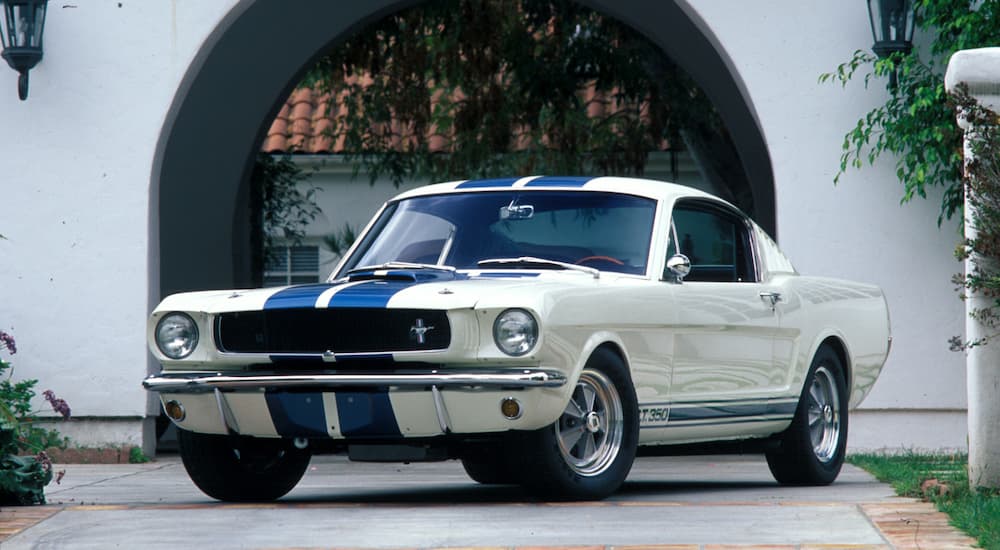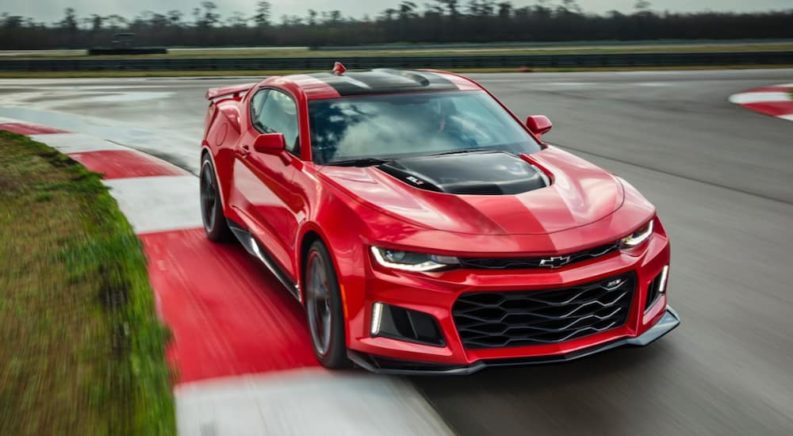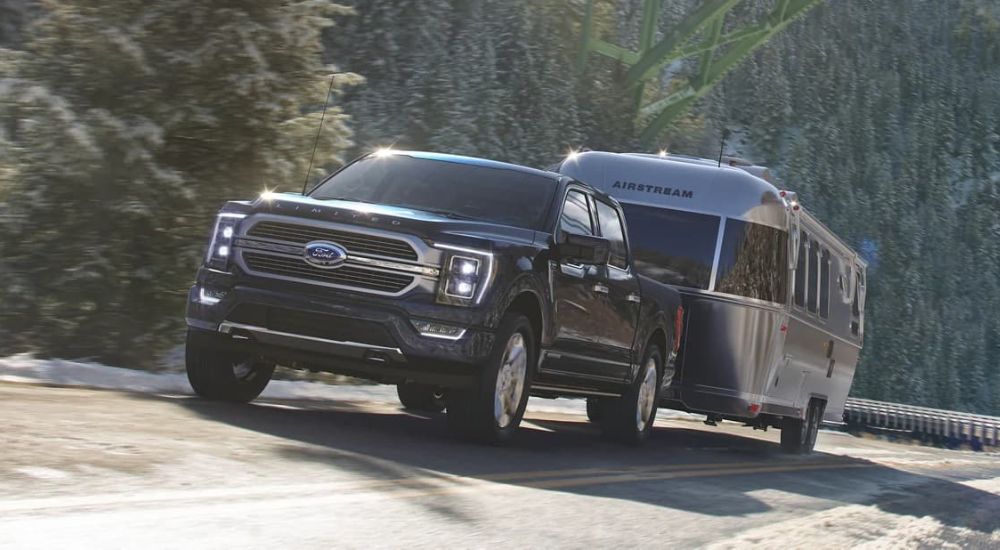If you are anything like me, then you tend to have just enough free time to sit around and wonder things like, “Where do car companies get the names of their models?” That is a great question, and there is no overarching answer because it all depends on the vehicle and the name. Sometimes they come up with a car name because they want the vehicle to evoke a particular concept or idea. Other times the name is much more utilitarian and provides shoppers with some information—like a weight or size class. Some things are pretty straightforward, but others are more out there. So, in this open topic, let’s look at some exciting car model names and their origins.

Ford Mustang
As one of the most iconic cars on the road, you would think that the story behind the “Mustang” name is simple, but there are two accounts of where the name came from. According to some, it was suggested by John Najjar, a Ford executive who co-designed the original Mustang—it’s said he was a fan of the P-51 Mustang fighter plane used in World War II and wanted to name the car after that. Others say that a market research manager at Ford named Robert Eggert suggested the name due to his personal interest in horses and the book The Mustang that his wife had given him as a gift. This story goes that Eggert added “Mustang” to a list of potential names for testing with focus groups and that it came out on top by a wide margin. We will never know which is accurate or if it combines both situations.
Chevy Camaro
Next up, we have the Chevy Camaro, which I have positioned here because its name can be seen as a response to Ford and the Mustang in its own weird way. When the Camaro was first designed in the 1960s, Chevy was on a roll with model names starting with “C;” there was the Chevy Corsair, the Corvette, and the Chevelle, for example. Wanting to stick with something similar, Chevy came up with the name “Camaro,” and their general manager at the time announced that it “suggests the comradeship of good friends.” I suppose this is due to Camaro sounding a bit like comrade. When asked, “What is a Camaro?” at the press conference where they revealed the car, one product manager replied, “A small, vicious animal that eats Mustangs.” That about sums it up, and the rest has been history.
Chevy Corvette
Anyone in the US Navy or simply a naval history fan should know this one. A corvette is a type of small warship, generally the smallest type used for battle. Just above it are frigates, destroyers above that, and cruisers or battlecruisers as the largest. In the post-WWII era, it should be no surprise that many classic cars owe their names to military terms or models (like the F-51 Mustang). The Corvette name was suggested by an assistant director of Public Relations at GM named Myron Scott, likely to recommend small size and speed and accepted by the higher-ups for their new 1953 model.
Ford F-150
Here is the perfect example of when a name is much more utilitarian but becomes no less iconic due to the vehicle it is attached to. Following WWII, Ford wanted to introduce an entirely new truck, and they began working on the first complete redesign of their pickup in a long time. The result was the Ford F-Series, the first Ford trucks to feature chassis built specifically for them rather than converted from a car model. A tremendous amount of money and energy went into designing these new trucks, and the F-Series was born.
The “F” stands for exactly what you would expect: Ford. However, when the F-Series first hit the road in the 1940s, they were numbered sequentially from F-1 to F-8. The F-1 was a half-ton truck, while the F-2 was a three-quarter-ton, the F-3 a more-powerful three-quarter, the F-4 a full-ton pickup, the F-5 a ton-and-a-half, the F-6 a two-ton truck, and the F-7 and F-8 were full heavy-duty trucks. For its second generation with the 1953 model year, Ford changed the naming structure to the three-digit numbers we know today, including an F-100, F-250, F-350, F-500, F-600, and more. The F-150 was not introduced until 1975 as an option between the F-100 and F-250, but it became so popular that the F-100 was discontinued after 1983.
Fiat Panda
If you have never heard of the Fiat Panda, then that is understandable because it is a European car and model name. That being said, I could not help but mention it because it is an interesting situation—with its name, you would easily assume it is honoring the Chinese giant panda. And you would be wrong. This car was named for the Roman goddess Empanda, also known as Panda, and it is completely unrelated to the black-and-white bears we all know and love. The aforementioned Roman goddess’s name comes from the word pandere, or “to open,” and she was a patron of travelers. You are forgiven for still thinking of bears if you should come across a Fiat Panda in the wild—or for freaking out if you come across an actual panda in the wild.
Jeep
Here is a fun one: if you ever find yourself in a room with a bunch of automotive history nerds (as one does), ask them where the name “Jeep” came from and see what happens. If you get the right group of people, you will have a fun argument because this one is hotly debated. I won’t get into the development of the original Jeep for the US Army, but instead, let’s talk about its name because there are several popular theories on where it came from.
One of the most common ones is that the term “jeep” came about in military use as a way to pronounce “GP,” which stood for General Purpose. Many pieces of equipment developed for military use were marked “GP,” and soldiers said “jeep” rather than pronouncing the two letters. One early version of the Willys Jeep was marked “Ford GP” (G for Government and P to indicate its wheelbase length), and that could’ve easily led to the name.
Another famous origin story ties into a cartoon character from the Popeye comic, whose name was Eugene the Jeep. This character first appeared in 1936, predating the Willys Jeep by several years, and it is possible that soldiers affectionately referred to their “go anywhere” vehicle using a reference to that character. Some people point to the word “jeep” being used in World War I to refer to new recruits and that the vehicle could have been called a jeep as it was the new, unproven ride showing up amidst many other military trucks. Ultimately, no one knows for sure, and it is possible the Jeep name originated from a combination of these sources; sometimes, things line up in ways that defy simplicity.
What Car Model Name Makes You Wonder?
Obviously, this was only a limited selection of car and truck models; there are dozens, if not hundreds, more that I could have looked at, but these were the first ones that came to mind. You can see that sometimes car names come about rather organically or about as you would expect—someone comes up with a name, it is approved, and away they go. But other times, you get strange situations like the Camaro, which has several meanings since it is a made-up word, or the Jeep, which has an origin shrouded in mystery. Maybe next time, we will look at the model names for Tesla vehicles or predict how many EVs we will get with names inspired by electricity. But in the meantime, what about you? What model names make you wonder about their origins?





